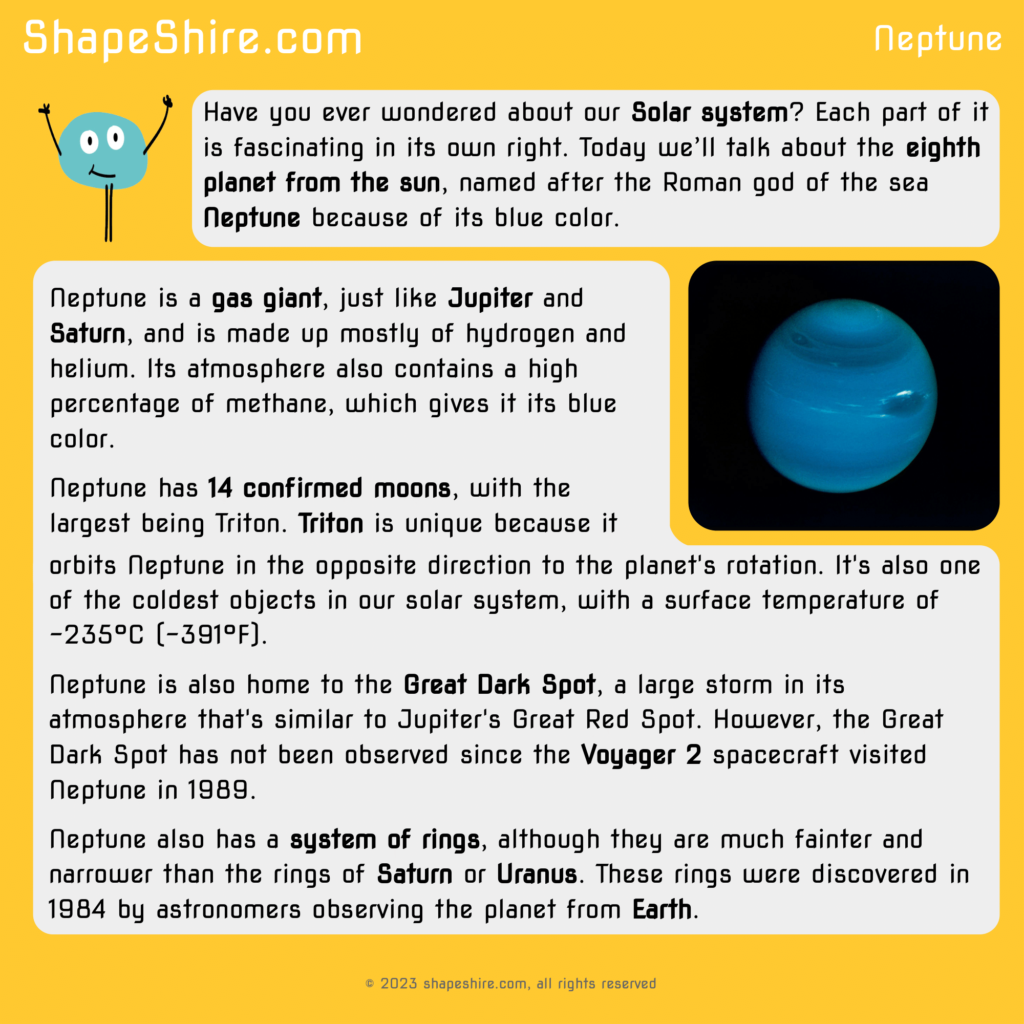Have you ever wondered about our Solar system? Each part of it is fascinating in its own right. Today we’ll talk about the eighth planet from the sun, named after the Roman god of the sea Neptune because of its blue color.

Neptune is a gas giant, just like Jupiter and Saturn, and is made up mostly of hydrogen and helium. Its atmosphere also contains a high percentage of methane, which gives it its blue color.
Neptune has 14 confirmed moons, with the largest being Triton. Triton is unique because it orbits Neptune in the opposite direction to the planet’s rotation. It’s also one of the coldest objects in our solar system, with a surface temperature of -235°C (-391°F).
Neptune is also home to the Great Dark Spot, a large storm in its atmosphere that’s similar to Jupiter’s Great Red Spot. However, the Great Dark Spot has not been observed since the Voyager 2 spacecraft visited Neptune in 1989.
Neptune also has a system of rings, although they are much fainter and narrower than the rings of Saturn or Uranus. These rings were discovered in 1984 by astronomers observing the planet from Earth.
